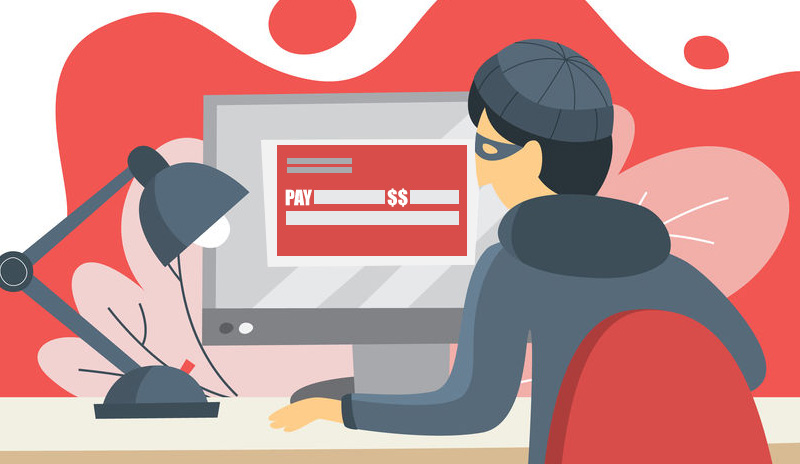By Matthew Albert

Life used to be much more simple when you gave your best friend a few bucks out of the till because they helped you hock lemonade during summer vacation. You knew where every dollar went within your business, and no one had a prayer of stealing your jar of cash out of the fortress of security known as “under your mattress.” Unfortunately, the simple quid pro quo days of childhood only last so long.
Last year, the ACFE found over 2500 cases of fraud among 125 countries that resulted in $3.6 BILLION worth of loss. That’s billion with a “B”. Today, businesses are at risk for fraud from a seemingly endless supply of sources. Some of them are painfully obvious:
- The Nigerian prince with a newfound interest in underwriting.
- The diligent employee who’s stuck in a meeting and needs you to buy gift cards because it’s VERY important.
- The Powerball drawing in Peru that gave your company a win without even purchasing a ticket.
Of course, other sources of fraud are not so obvious on the surface. They’re problems that can be hard to track while they’re wreaking havoc on your business. Nevertheless, it’s these problems that demand your highest awareness. We’re talking about:
- Fake Check and Altered Check Duplicity
- Fake Billing Chicanery
- Expense Account Thievery
- ACH Trickery
- Kickback Skulduggery
Over the next few articles, we’re going to go in-depth on how these problems occur, how you can catch them, and what you can do to minimize the chances of them hurting your business. Today, we’re focusing on fake/altered checks and fake billing–two sources of fraud that can occur outside the walls of your business.
Fake/Altered Checks

Check fraud runs rampant in a number of ways. A person can wrongfully endorse a check, write a check on a closed account, print counterfeit checks, and even use chemicals in highly sophisticated operations to remove important information. (If MacGyver can do it, so can fraudsters.)
Part of the problem lies in the widespread use of checks. More checks=more chances for fraud to occur. In 2018 alone, the Federal Reserve reported 14.5 billion check payments totaling almost $25.8 trillion. While those numbers do show a decrease from 2015, the bottom line is that businesses still write a ton of checks that can be intercepted by criminals just waiting to pounce. If you own a small business, the ACFE says you’re four times more likely to encounter check fraud.
The news is not all bad, though. In fact, smart business can take a series of steps to prevent check fraud. A number of the methods listed below are just good business practices. Some require more work on your part to implement them. Either way, they’re all worth considering.
- Convert payments to ACH and/or similar electronic ways
- Reconcile your accounts as soon as possible
- Use securely connected online reporting systems
- Have separate accounts for transactions–one for paper and one for electronic
- Implement ACH Blocks and Filters
Fake Billing

Over time, as you build trust with vendors, it gets easier and easier for AP employees to approve payments quickly. Time is money, right? Unfortunately, certain vendors abuse this trust by sneaking in fake services and driving up the invoice totals.
The trickiest fraudsters slowly increase the total so that you won’t notice right away. For example, a recurring $100 monthly payment becomes $110 for no reason or for some fake service the vendor didn’t provide. No one in your business cares to look into it because who has time to chase down 10 dollars? As time goes on, $110 slowly creeps up to $120. A few months later, it’s up to $160. By the next year, it’s up to $210. The growth is so slow that you don’t see it until the damage has been done.
It’d be nice if that was the only source of this garbage. Unfortunately, it’s not. You also have to contend with fraudsters impersonating vendors, email hacks (phishing), and fake email domains created by crooks that look similar to your actual vendors’ email addresses. Oh, and if you’re a small business? The ACFE says you’re twice as likely to get duped here.
So what can you do here? As it turns out, plenty. What we’re suggesting here isn’t that difficult, either. It just requires a good detail-oriented team that’s been given sufficient training in the following practices:
- When you receive a bill, email and telephone the vendor to confirm they sent it.
- If a vendor’s contact info appears to be different than what you have on file, attach all original paperwork for your controller so that they can verify the bill is legitimate.
- Keep a “security” question on file that only the vendor would know. Ask them the question via email or over the phone to confirm it’s them.
- KEEP YOUR TEAM IN THE LOOP! The longer you keep a known fraud attempt secret from your trusted employees, the higher the chance they’ll make an unfortunate costly mistake.
Next Up: Expense Account and ACH Fraud

